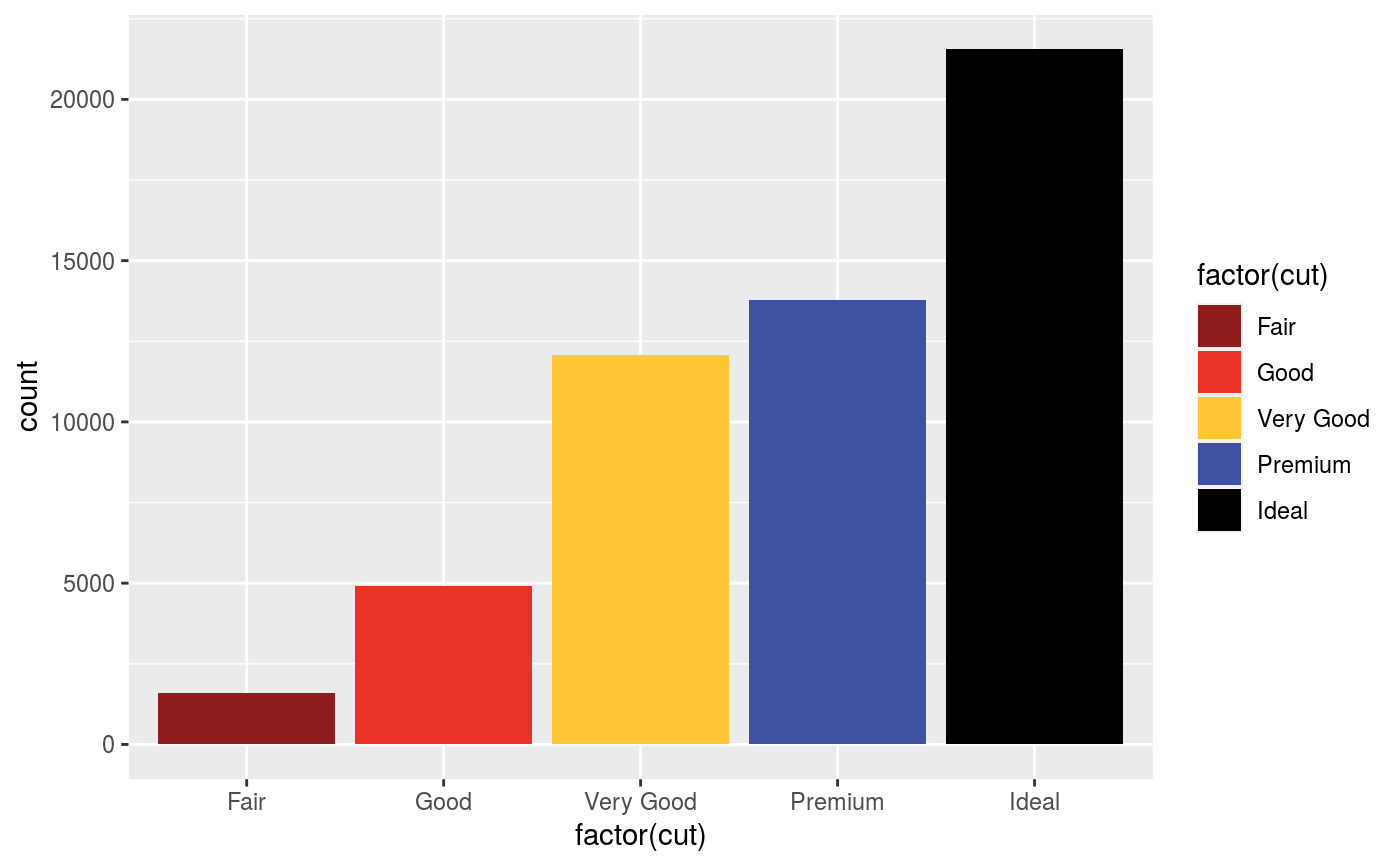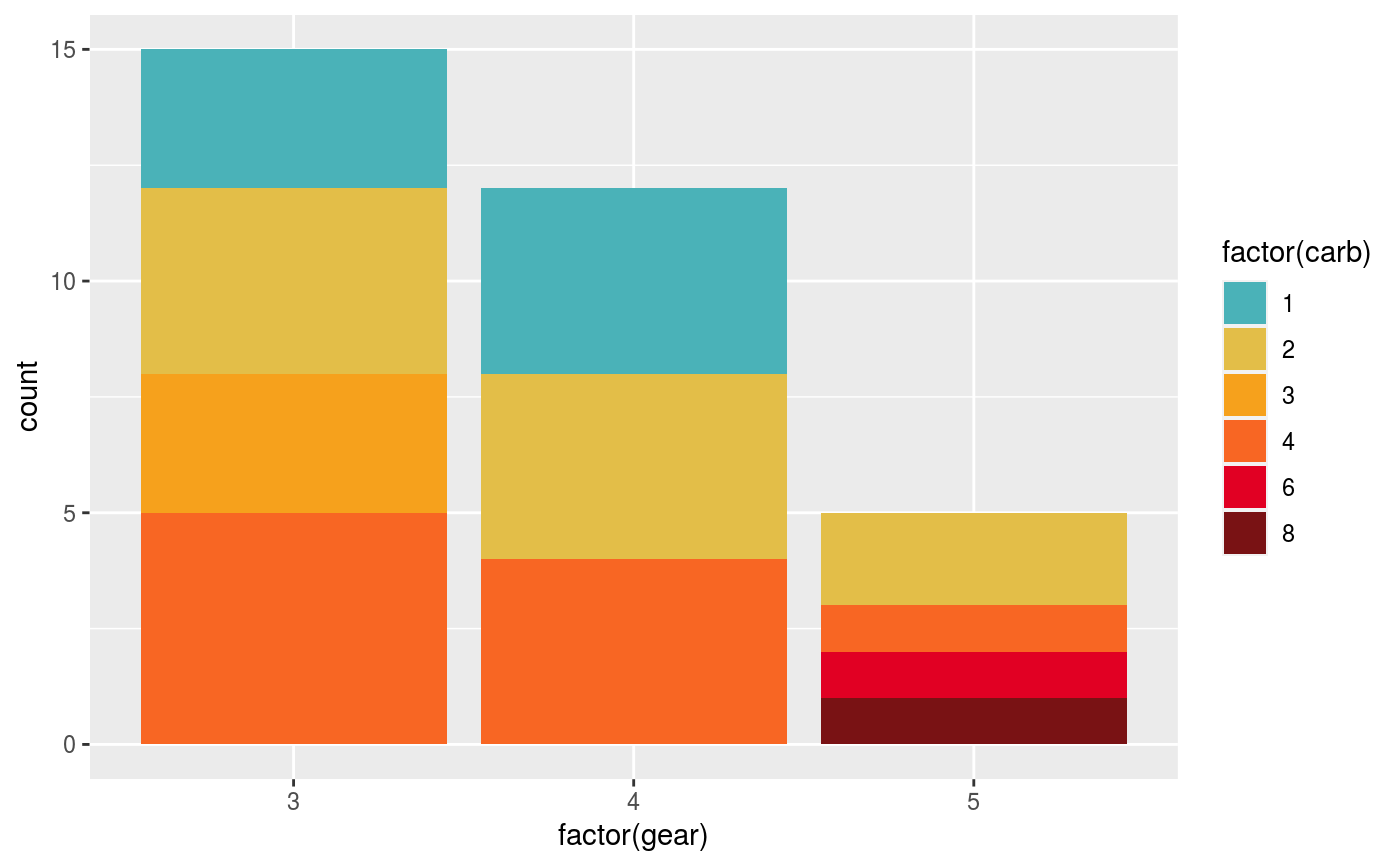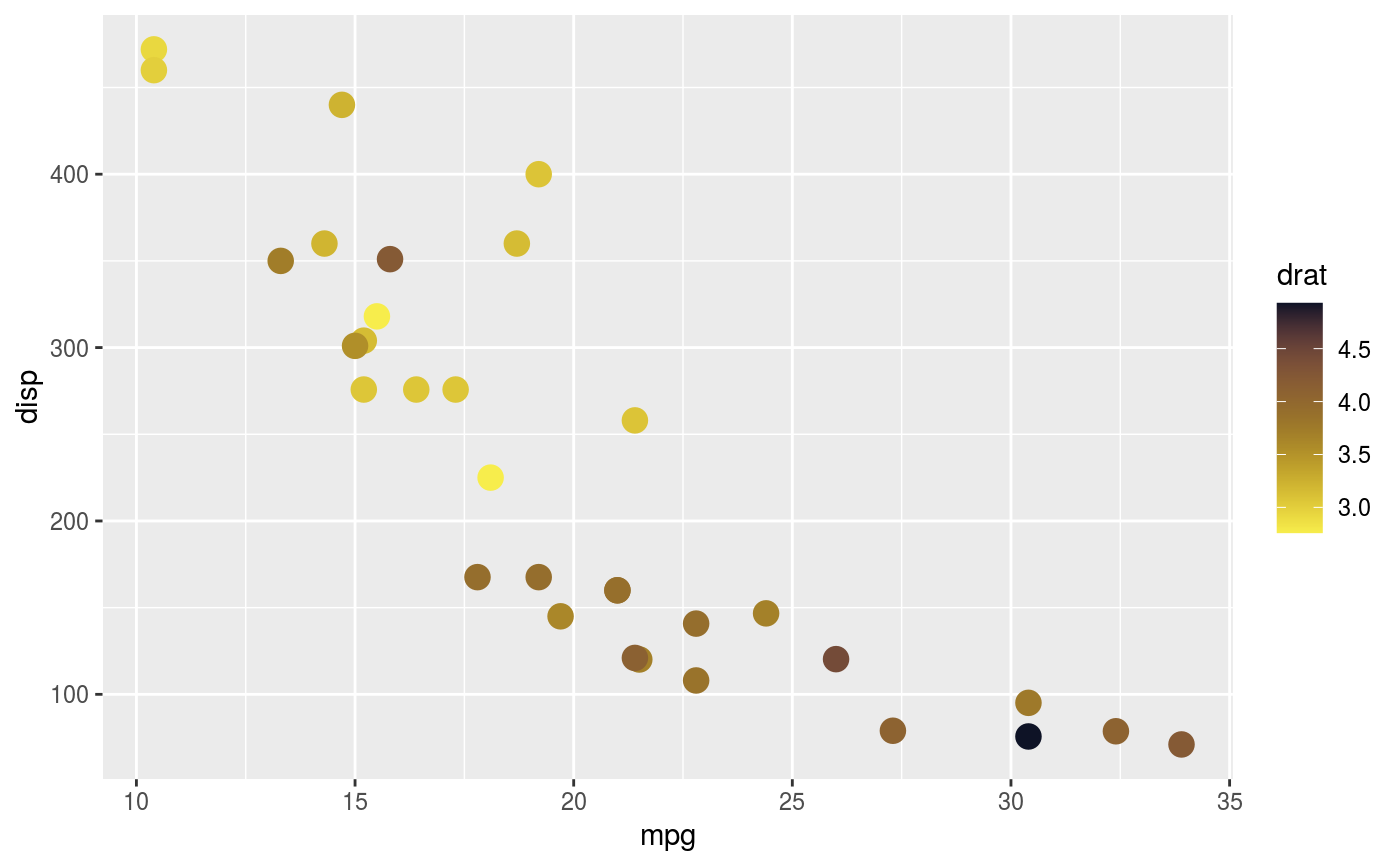Uses the fish color scale.
scale_color_fish( option = "Centropyge_loricula", ..., alpha = 1, begin = 0, end = 1, direction = 1, discrete = FALSE ) scale_colour_fish( option = "Centropyge_loricula", ..., alpha = 1, begin = 0, end = 1, direction = 1, discrete = FALSE ) scale_colour_fish_d( option = "Centropyge_loricula", ..., alpha = 1, begin = 0, end = 1, direction = 1 ) scale_color_fish_d( option = "Centropyge_loricula", ..., alpha = 1, begin = 0, end = 1, direction = 1 ) scale_fill_fish_d( option = "Centropyge_loricula", ..., alpha = 1, begin = 0, end = 1, direction = 1 ) scale_fill_fish( option = "Centropyge_loricula", ..., alpha = 1, begin = 0, end = 1, direction = 1, discrete = FALSE )
Arguments
| option | A character string indicating the fish species to use. |
|---|---|
| ... | parameters to |
| alpha | pass through parameter to |
| begin | The (corrected) hue in [0,1] at which the fish colormap begins. |
| end | The (corrected) hue in [0,1] at which the fish colormap ends. |
| direction | Sets the order of colors in the scale. If 1, the default, colors
are as output by |
| discrete | generate a discrete palette? (default: |
Details
For discrete == FALSE (the default) all other arguments are as to
scale_fill_gradientn or scale_color_gradientn.
Otherwise the function will return a discrete_scale with the plot-computed
number of colors.
Examples
library(ggplot2) library(fishualize) ggplot(diamonds, aes(factor(cut), fill=factor(cut))) + geom_bar() + scale_fill_fish(discrete = TRUE, option = "Centropyge_loricula")ggplot(mtcars, aes(factor(gear), fill=factor(carb))) + geom_bar() + scale_fill_fish(discrete = TRUE, option = "Trimma_lantana")ggplot(mtcars, aes(x = mpg, y = disp, colour = drat)) + geom_point(size = 4) + scale_colour_fish(option = "Ostracion_cubicus", direction = -1)


